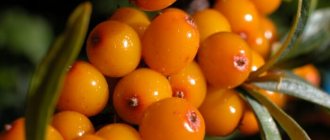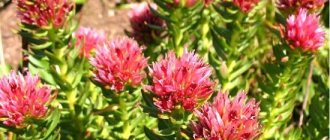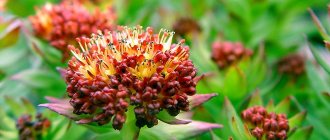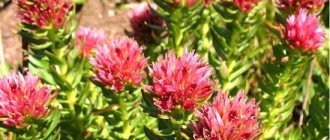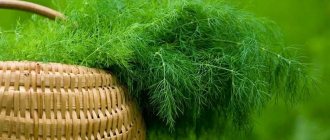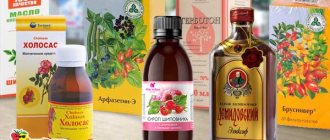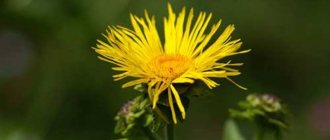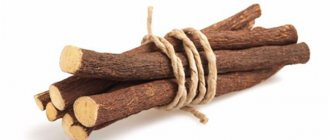Photo: UGC Burdock, or burdock, is a common weed that has a wide range of beneficial properties. It is actively used in herbal medicine, cosmetology and cooking. The whole plant has healing properties, but the greatest part of the medicinal value will be found in its lower part. Burdock root has medicinal properties and contraindications, which will be discussed in our article.
Brief description of the root
According to scientists, burdock is a unique plant.
Despite its “weedy” nature, its chemical composition is a real storehouse of usefulness. Its medicinal properties are described in ancient medicinal books, but they are still used today, including by professional doctors. 80% of the medicinal potential of burdock lies in the roots. It is here that an important and rare component was found - the polysaccharide inulin, which plays a significant role in normalizing metabolism.
In addition to inulin, burdock roots contain:
- essential oils;
- vitamins;
- minerals;
- tannins;
- protein.
Therefore, the main directions of influence on the body are:
- diuretic;
- choleretic;
- soothing;
- oncoprotective;
- anti-inflammatory;
- anti-arthritic;
- wound healing;
- antidiabetic;
- painkiller.
Burdock root contains substances that stimulate hair growth and improve skin condition.
Chemical composition
Burdock leaves contain a lot of tannins, essential oils and mucus. This chemical composition of the leaves allows them to be used as an external hemostatic and wound healing agent.
The seeds of this plant contain a lot of fatty acids and the lignan glycoside arctiin (eleutheroside F). This substance exhibits pronounced antibacterial and hypoglycemic properties.
The chemical composition of different parts of burdock differs significantly, but the roots of burdock are the richest in useful substances. Fresh roots of one-year-old burdock contain up to 18 g of carbohydrates (of which 3 g of dietary fiber), 1.5-1.6 g of proteins and up to 0.2 g of fat. The calorie content of 100 g of raw burdock roots is 72-75 kcal.
Burdock roots contain significant amounts of:
- inulin;
- fatty acid;
- phytosterols;
- essential oils;
- resins;
- tannins;
- bitterness;
- vitamins;
- minerals;
- mucus.
Fatty acids, of which the largest amount are stearic and palmitic, are involved in the synthesis of cell membranes and the main substances of connective tissue - hyaluronic acid, collagen and elastin.
Burdock phytosterols (stigmasterol, sitosterol) play the role of antagonists of animal cholesterol, preventing its deposition in the walls of blood vessels as part of atherosclerotic plaques.
Burdock roots contain many vitamins B, C, E. They are a source of potassium, manganese, magnesium, and copper.
Due to the high concentration of potassium, burdock raw material has a pronounced diuretic effect. Vitamins and minerals
| Name | Content per 100 g of fresh roots, milligrams |
| Vitamin B1 (thiamine) | 0,01 |
| Vitamin B2 (riboflavin) | 0,03 |
| Vitamin B4 (choline) | 11,7 |
| Vitamin B5 (pantothenic acid) | 0,32 |
| Vitamin B6 (pyridoxine) | 0,24 |
| Vitamin B9 (folic acid) | 0,023 |
| Vitamin C (ascorbic acid) | 3,0 |
| Vitamin E (tocopherol) | 0,38 |
| Magnesium | 0,038 |
| Potassium | 308,0 |
| Phosphorus | 51,0 |
| Sodium | 5,0 |
| Calcium | 41,0 |
| Iron | 0,8 |
| Manganese | 0,23 |
| Zinc | 0,33 |
| Copper | 0,08 |
| Selenium | 0,0007 |
The bitterness contained in burdock raw materials, together with inulin, prevents surges in glucose levels in patients with diabetes.
What properties does burdock root have?
The impact on the body of the components that make up burdock root is difficult to overestimate.
- By regulating metabolism, they support basic life processes.
- In second place in importance is cleansing the body of toxins and other breakdown products.
- The third is lowering cholesterol levels and preventing atherosclerotic deposits on the walls of blood vessels.
Products made from burdock root, when used regularly, can:
- fight infections, showing a good disinfectant effect;
- relieve pain;
- have an antiallergic effect by inhibiting histamine synthesis;
- reduce the intensity of inflammatory processes;
- activate the regenerative properties of tissues;
- normalize bile formation and movement of bile through the ducts.
There is information about the ability of burdock root to have an antidiabetic effect, as well as to activate mental processes. With its help, you can boost the body's immune defense and stimulate the production of its own antibodies to fight infections.
What are the indications for use?
Remedies based on burdock root are prescribed to patients with various symptoms and complaints.
Often these are problems with the functioning of the gallbladder and kidneys. Stagnation of bile, the formation of stones in the gall bladder and ducts, hence defects in food digestion, always require medications that exhibit choleretic properties. Burdock root will cope with this task quite well.
Indications for the use of burdock root are cystitis, urolithiasis, degeneration of kidney tissue - various types of nephrosis.
Burdock root products help against diseases of the skin, scalp, and in solving cosmetic problems. Thanks to the antiseptic and anti-inflammatory effects of burdock root components, the skin is cleansed of pathogenic agents, its pores open, restoring skin respiration. By stimulating blood microcirculation, burdock root improves the nutrition of dermal cells and strengthens hair follicles and bulbs.
A positive effect on the gastrointestinal tract was noted, including the treatment and prevention of cholecystitis, pancreatitis, and gastritis. In case of increased acidity of gastric juice, herbal treatment should be carried out only after consultation with a doctor.
Today, the possible effectiveness of drugs containing burdock root in the treatment and prevention of cancer is being discussed. Considering the fact that burdock is a biennial plant, it is necessary to know when its composition is most beneficial for humans. The fact is that in the second year of life, burdock begins to spend its biological reserves for its own needs. Therefore, it is important to collect raw materials before this period.
Contraindications and harm of burdock to the body
This plant has a small list of restrictions for use:
- The main contraindication is individual intolerance.
- The use of the plant during pregnancy and lactation is, as a rule, not practiced, but in exceptional cases it is possible after consultation with a doctor.
- In limited quantities, burdock can be used by allergy sufferers. Before external use, you need to apply a small amount of the plant to the inside of the forearm: if burning and itching appears after half an hour, then use is contraindicated.
- In the absence of allergic reactions, taking burdock is not recommended if the plant was picked in an environmentally polluted area or was grown with the use of pesticides.
- If the plant is abused, the digestive system may malfunction. The appearance of abdominal pain, flatulence and constipation means that burdock intake should be temporarily limited.
- Dosages of products made from it must be limited both in quantity and duration, otherwise glycogen begins to be deposited in the liver in large quantities.
- While taking burdock and tinctures from it is possible for adults in almost any case, giving it to children under 12 years of age is not recommended.
A unique plant for cancerous tumors
See also:
Creeping wheatgrass - medicinal properties and contraindications, benefits and harms
